Introduction
Navigating the intricate landscape of modern software development demands a structured and methodical approach to ensure efficiency and high-quality outcomes. The Software Development Life Cycle (SDLC) stands as a foundational framework that breaks down the development process into distinct, manageable phases. From planning and requirements gathering to design, development, testing, and maintenance, each stage is meticulously designed to address specific deliverables and mitigate potential risks.
This systematic approach not only enhances collaboration among team members and stakeholders but also aligns the end product with user expectations and business objectives.
As the software industry continues to evolve, driven by rapid technological advancements and shifting market demands, the implementation of an SDLC framework becomes increasingly crucial. It facilitates the integration of quality assurance at every stage, ensuring that the final product is robust, scalable, and efficient. Moreover, understanding the various SDLC models—be it Agile, Waterfall, Iterative, or Spiral—allows teams to choose the most suitable methodology for their projects, balancing flexibility with structured progress.
This article delves into the key objectives, phases, and models of the SDLC, providing insights into how this framework can streamline the development process and improve overall project success. By exploring real-world examples and modern practices, the discussion highlights the benefits and challenges of implementing SDLC in today's fast-paced, technology-driven environment.
What is SDLC?
The Software Development Life Cycle (SDLC) is a methodical process that delineates the stages involved in creating applications. This structured method encompasses planning, requirements gathering, design, creation, testing, implementation, and maintenance, ensuring that each phase has distinct deliverables and related values. By breaking down the complex task of creating applications into manageable steps, it helps teams identify potential risks early and devise strategies to mitigate them, significantly improving the overall quality of the products produced.
Contemporary application creation has transformed significantly from its initial period, propelled by technological progress and changing market needs. Today, the focus is not just on writing code but on delivering robust, scalable, and efficient solutions. Implementing an SDLC framework facilitates this by integrating quality assurance at every stage, resulting in more reliable end products.
Moreover, the SDLC promotes enhanced collaboration among team members and stakeholders through well-defined roles and clear documentation. This enhanced communication not only simplifies the creation process but also guarantees that the final product corresponds well with user expectations and business objectives. As we enter 2023, keeping updated on emerging trends in DevOps and other transformative methodologies will be essential for maintaining a competitive advantage in application development.
Key Objectives of SDLC
The Software Development Life Cycle (SDLC) aims to produce high-quality applications that meet or exceed customer expectations within time and cost estimates. By adhering to an organized method, SDLC guarantees the quality and accuracy of applications, manages timelines and expenses, and promotes clear communication among stakeholders. This process is critical in modern software development, which has become increasingly complex and multifaceted due to technological advancements and changing market demands.
One of the key components of SDLC is maintaining clear objectives, which provide direction and focus throughout the endeavor. Effective management is another vital component, ensuring that initiatives remain on course and aligned with business objectives. Robust leadership and the participation of skilled teams are crucial in guiding initiatives to successful completion.
A well-defined SDLC helps organizations adapt to the evolving needs of their projects. Custom application creation, for example, provides personalized solutions that can be modified as needs evolve, enhancing efficiency by automating repetitive tasks and connecting with current systems. This flexibility is essential in today's rapidly changing atmosphere, where programming procedures are constantly advancing.
Furthermore, by cultivating a culture of collective accountability, teams can react swiftly to changes and challenges, similar to how the Hoover Dam endeavor adjusted to unexpected circumstances. 'Agile methodologies, which involve iterative development and collaboration among cross-functional teams, have become integral to application development, increasing flexibility and minimizing issues associated with traditional waterfall models.'.
Overall, the SDLC framework offers a thorough guide for delivering strong, scalable, and efficient solutions, ensuring that endeavors not only satisfy user needs but also align with wider business goals.
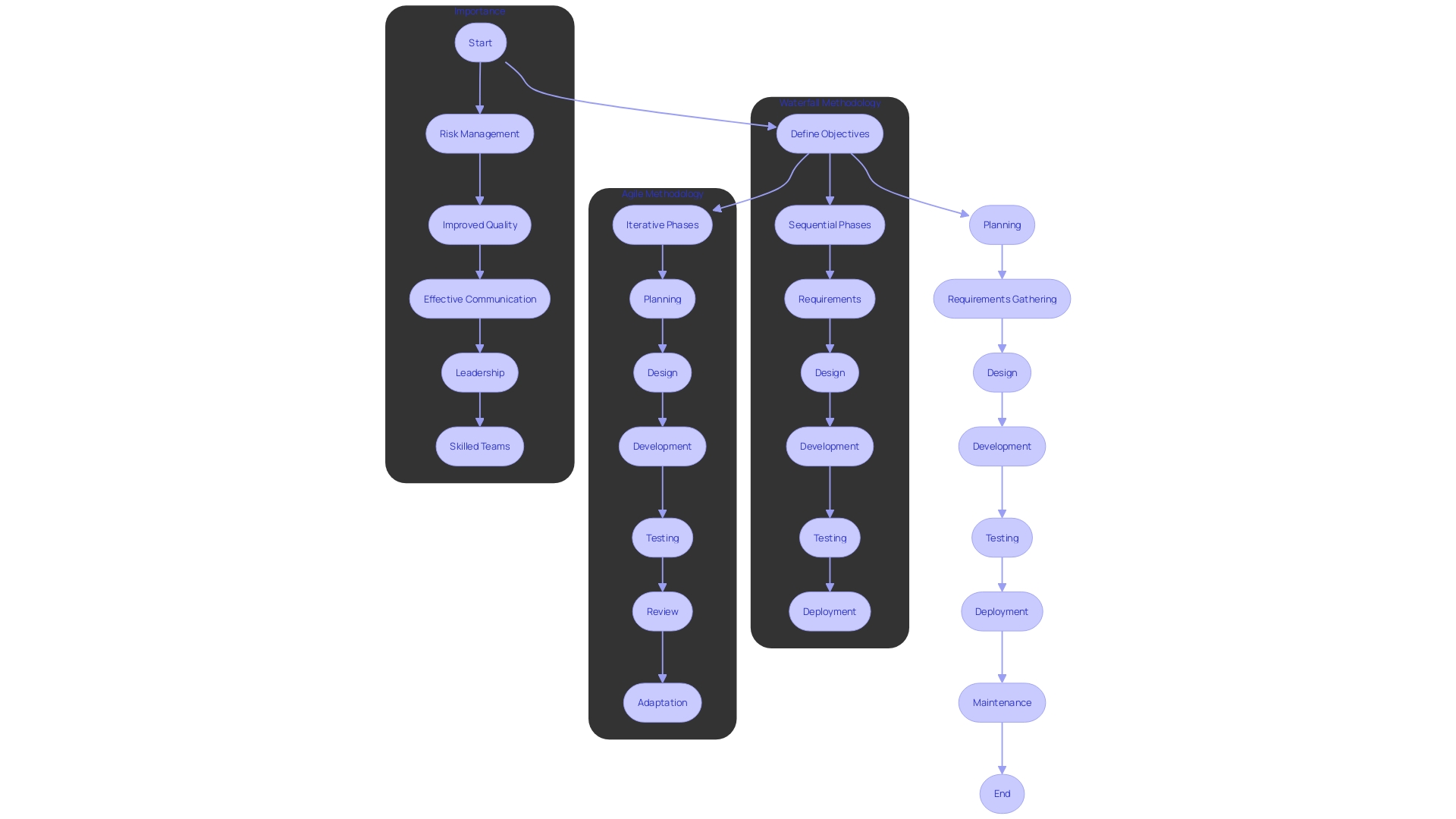
Phases of SDLC
The Software Development Life Cycle (SDLC) is a organized procedure that includes several stages crucial for the successful completion of software endeavors. Every stage has defined aims and outcomes, guaranteeing that the initiative corresponds with both strategic and business objectives.
The SDLC starts with the planning stage, where requirements for the endeavor are identified, and feasibility studies are conducted. This stage is essential for establishing clear goals, which offer guidance and concentration for the whole endeavor. Effective planning involves market research, target audience identification, and outlining core features, ensuring that the project addresses specific needs or problems.
Next is the design stage, which blends creativity and technical expertise to bring concepts to life. This involves creating wireframes, user interface designs, and prototypes to visualize user experience. The design stage answers critical questions about data needs and serves as the heart of the product approach, ensuring thorough user analysis and problem-solving.
The progress stage comes next, where programmers and creators convert designs into operational code. This stage requires maintaining high specificity and context to meet initial requirements. Contemporary application creation emphasizes delivering robust, scalable, and efficient solutions, reflecting the industry's shift towards more complex and multifaceted projects.
Once development is complete, the testing stage begins. Thorough testing is crucial to detect and resolve bugs or errors, ensuring the system's reliability and performance. Ongoing observation and enhancement during this stage assist in optimizing the application, encouraging a mindset of ongoing development.
Ultimately, the implementation and upkeep stage guarantees that the application is provided to users and stays operational and current over time. This stage includes implementing the application, observing its performance, and making essential adjustments to tackle any problems or changing needs.
By adhering to these organized stages, the SDLC offers a thorough framework that directs the software development process from inception to deployment and maintenance, guaranteeing that initiatives are completed successfully and achieve their intended goals.
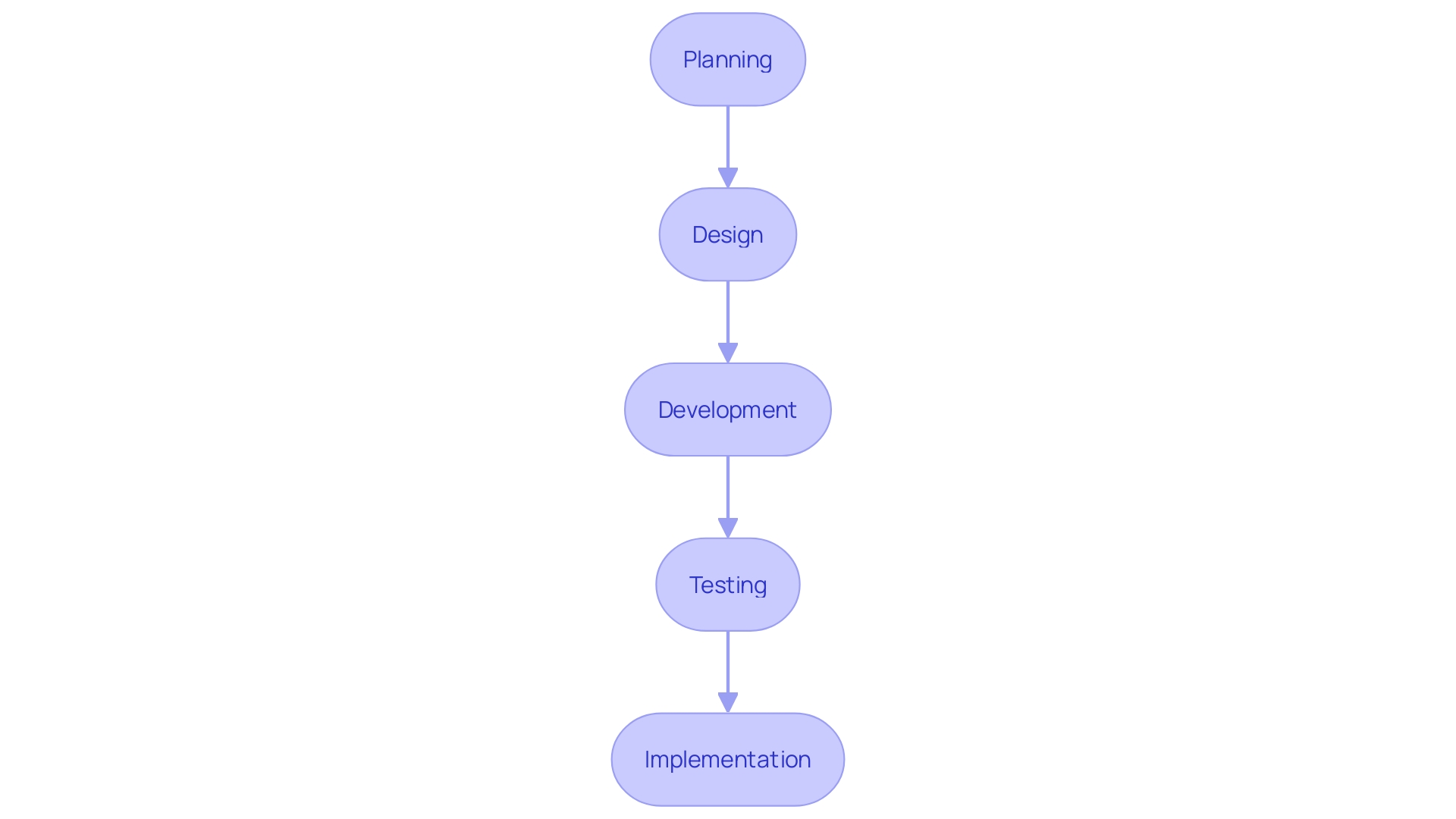
Planning Phase
The preparation stage is vital as it establishes the groundwork for the whole endeavor. During this phase, the scope of the endeavor is clearly defined, resources are identified, and timelines are established. Stakeholders collaborate to outline specific goals and objectives, ensuring alignment across all parties involved. For instance, Thunder Bay's experience highlighted the importance of setting realistic and timely goals. They discovered that underestimating task durations could lead to production delays, emphasizing the need for thorough initial planning.
Developing a comprehensive plan is crucial for successful execution. This plan should serve as a roadmap, outlining tasks, timelines, resources, and milestones. The plan must balance specificity with flexibility, allowing adjustments as needed. For example, Thunder Bay adjusted their roadmap to determine current service levels before seeking public input, demonstrating the importance of adaptive planning.
Effective planning also involves identifying potential risks and developing mitigation strategies. By ensuring all stakeholders are on the same page from the outset, the initiative is more likely to proceed smoothly, avoiding common pitfalls such as communication breakdowns and scope creep. This structured approach not only streamlines the development process but also enhances the overall efficiency and success of the project.
Requirements Analysis Phase
The requirements analysis stage is a cornerstone of the Software Development Life Cycle (SDLC). During this phase, developers actively gather and document the specific needs and expectations of users. 'This comprehensive process lays the foundation for the entire endeavor, ensuring that the final product aligns with user demands and business goals.'.
Requirements serve as a dynamic framework, allowing for continuous adaptability and refinement throughout the project. They are distinct from architecture, design, or user interface elements, providing the necessary flexibility for innovative solutions. IBM's Rational DOORS is an example of a sophisticated tool used for managing complex requirements with detailed traceability and analysis.
A critical aspect of this stage is maintaining a shared vocabulary or glossary. Clear and consistent communication among all stakeholders, including developers, clients, and customers, is crucial. This shared understanding helps prevent misunderstandings and ensures that everyone is on the same page.
Moreover, the requirements analysis stage involves a detailed examination of the technical and organizational environments. This includes detailing the hardware, applications, and network infrastructure that will support the system, as well as any organizational processes, structures, or external factors that may impact the project. Additionally, legal and regulatory requirements must be identified and documented to ensure compliance.
By using a standard template for the Business Requirements Specification (BRS) document, developers can create a professional and comprehensive outline that meets the needs of all stakeholders. This document must be examined by appropriate individuals to guarantee precision and thoroughness, thereby establishing a strong base for the following stages of the SDLC.
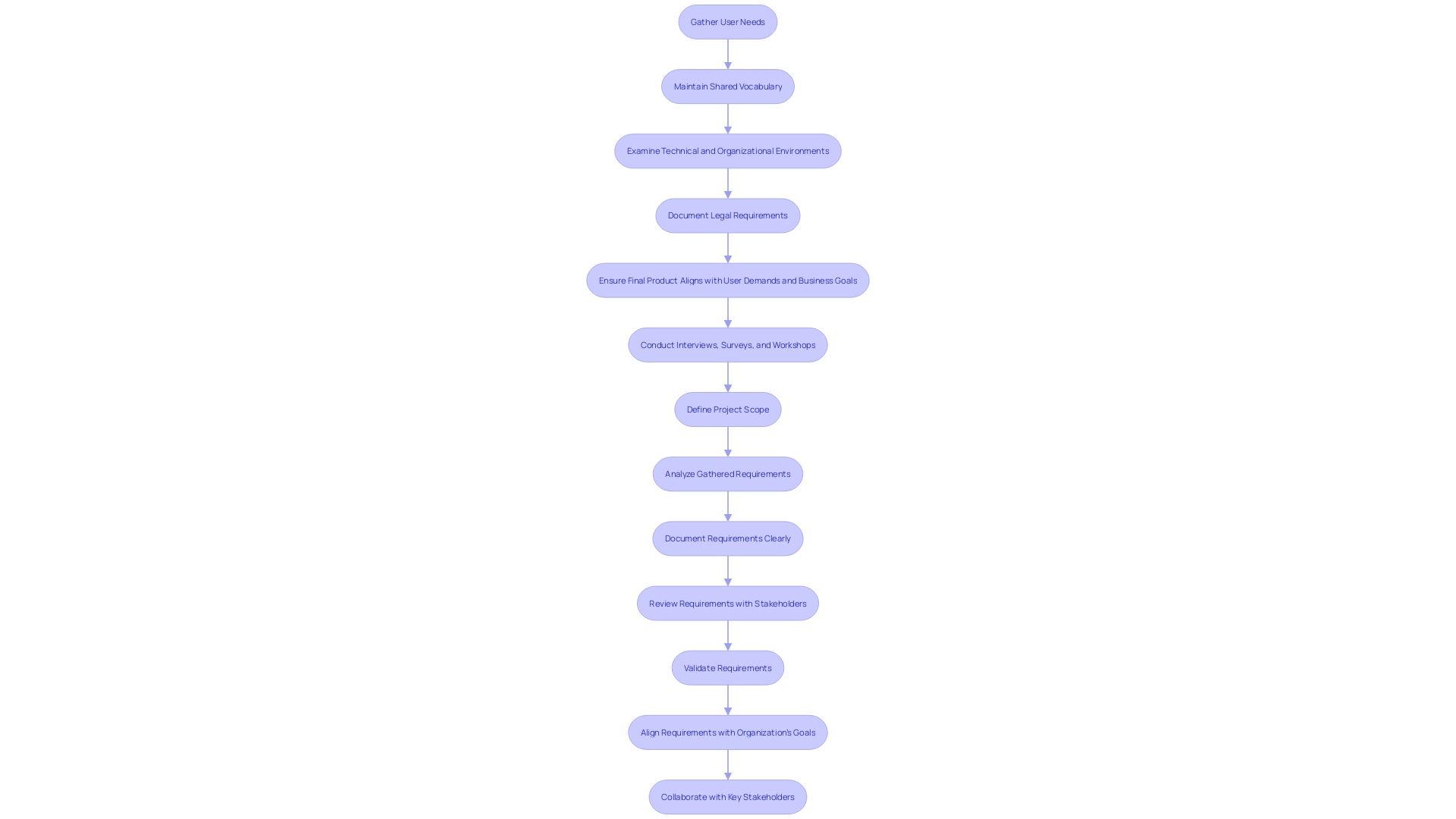
Design Phase
The design stage is a critical juncture where developers and designers collaboratively shape the software's architecture. This collaboration is essential for creating a cohesive and functional user experience. In this stage, they define technical specifications, user interfaces, and the overall system architecture. This process guarantees that all design components correspond with the specifications set in the earlier stage.
However, bridging the gap between design and code can be fraught with challenges, often leading to communication gaps and inconsistencies. These issues can significantly hinder productivity. According to research involving over 2000 developers, effective collaboration and feedback loops positively impact team performance and organizational outcomes.
To address these challenges, some organizations have adopted tools like UXPin Merge, which allows designers to work with code-backed visual components. This approach establishes a common language between designers and developers, promoting organized and coherent practices. It also helps define clear guidelines for unit testing and component scope.
'The design stage is not just about creating a blueprint; it's about fostering a collaborative environment where both designers and developers contribute to a seamless and efficient workflow.'. By doing so, teams can minimize miscommunication and enhance the overall quality and efficiency of the software creation process.

Implementation/Coding Phase
During the implementation phase, developers transform detailed design specifications into functional code. This collaborative endeavor is essential for maintaining high standards of efficiency and ensuring the code's long-term maintainability. Adopting coding standards not only enhances code quality but also simplifies the process by creating a cohesive and consistent codebase. Such practices reduce the cognitive load for developers, making it easier to navigate and understand the code. For instance, M&T Bank has successfully implemented organization-wide Clean Code standards, which support maintainability and performance. The adoption of these standards mitigates the risks associated with poorly written code, such as security vulnerabilities and financial losses. In an industry where programs must adapt and evolve, a unified approach to coding ensures that projects remain robust and scalable over time.
Testing Phase
'The evaluation stage is crucial for guaranteeing that application programs uphold high standards of quality and dependability in a rapidly changing development environment.'. This phase involves a variety of testing methods, each serving a unique purpose to catch and rectify defects early.
Unit testing inspects individual components or modules to verify their functionality in isolation. 'This step is crucial for identifying issues at the most granular level, ensuring each component of the system is reliable before integration.'.
Integration testing then examines how different modules work together, highlighting any incompatibilities or interface issues that could disrupt the overall functionality.
User acceptance testing (UAT) is the final checkpoint where end-users assess the application to confirm it meets their requirements and expectations. This phase is vital for ensuring the application is user-friendly and performs well in real-world scenarios.
The importance of rigorous testing can't be overstated, especially in large-scale projects where complexity and stakes are higher. According to the Consortium for Information & Software Quality (CISQ), faulty programs cost U.S. industries over $2 trillion in 2022 alone. Effective testing not only prevents such financial losses but also contributes to substantial cost savings and return on investment (ROI) by avoiding the need for extensive post-release fixes.
In today's competitive landscape, leveraging modern testing methods—such as AI-driven testing tools—can greatly enhance efficiency, speed, and accuracy. These tools automate repetitive tasks and provide deeper insights through techniques like Test Impact Analysis (TIA), which identifies affected code areas after changes, ensuring comprehensive and efficient testing.
By employing these advanced testing strategies, organizations can deliver high-quality applications that meet user expectations, comply with standards, and maintain robust performance across various platforms and environments.

Deployment Phase
Once the software has been rigorously tested and approved, it enters the deployment stage, where it is pushed to the production environment. This critical stage involves several key activities, including installation, configuration, and user training to ensure a seamless transition from development to real-world usage.
For example, Delivery Hero, a global delivery platform operating in over 70 countries, faced significant challenges with employee account lockouts. By optimizing their deployment processes, they reduced the average recovery time from 35 minutes, saving around 200 hours per month. This not only improved efficiency but also minimized downtime for their 53,000 global employees.
"Configuration management tools such as Ansible, recognized for their agentless design, play an essential part in this stage, providing scalability, flexibility, and strong support for different platforms and cloud providers.". These tools ensure that deployments are smooth and that systems remain compliant and performant.
Paul Valderama, Senior Web & Mobile Developer at California State University, highlights the importance of structured environments in deployment. By leveraging tools like Postman, his team has eliminated repetitive steps and streamlined their processes, leading to faster and more efficient deployments.
Monitoring product performance is also critical post-deployment. Key performance indicators (KPIs) such as memory usage, CPU usage, and query response times are essential metrics. These metrics help in assessing the success of the deployment and ensuring the system runs smoothly.
'With the appropriate tools and strategies, the implementation stage can change from a possible hindrance into an efficient process, ensuring that the application provides maximum value from day one.'.
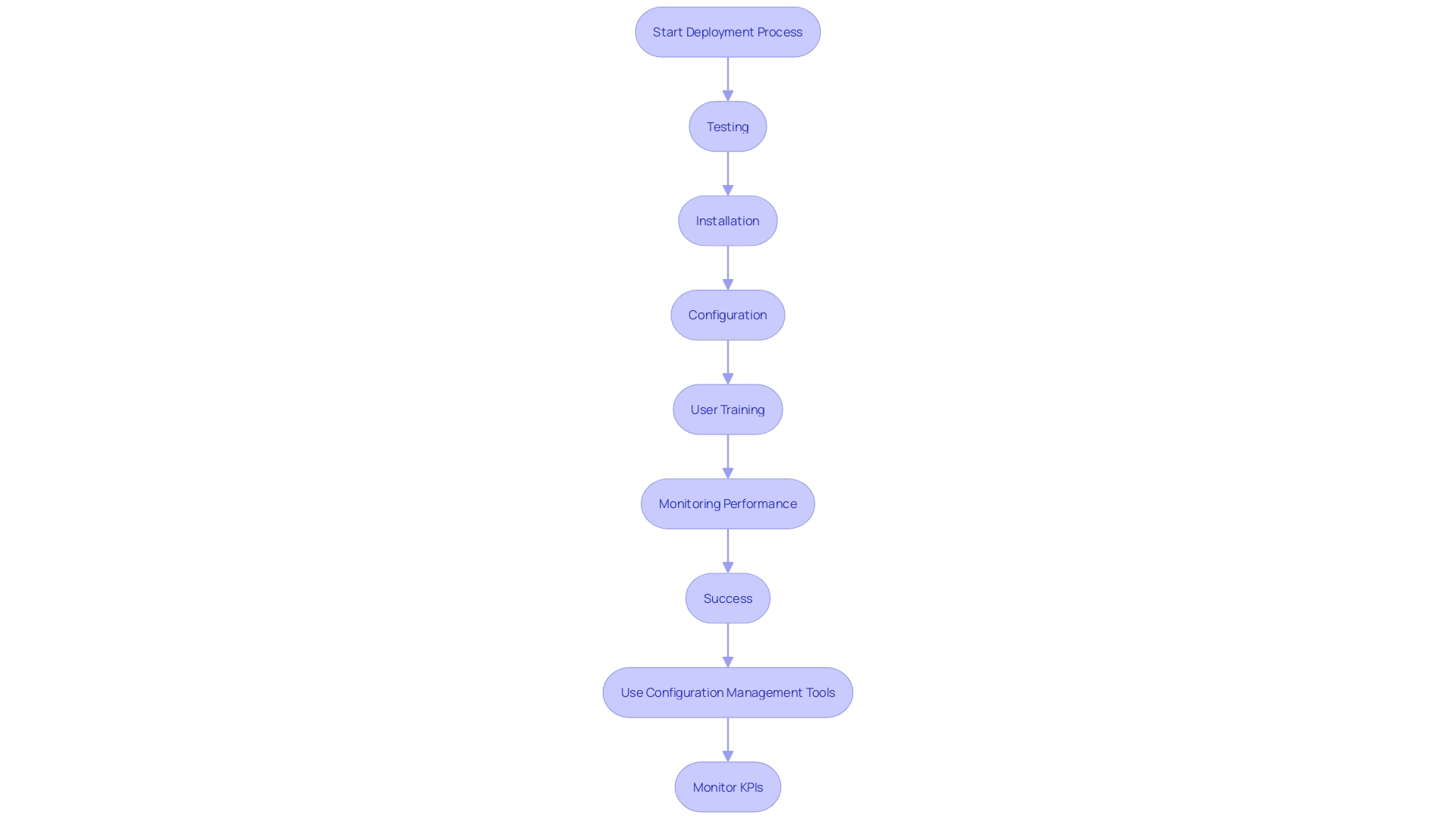
Maintenance Phase
The maintenance phase is vital for the longevity and performance of applications post-deployment. This stage encompasses several key activities:
-
Bug Fixes and Updates: These are essential to address any issues that arise after the software goes live. The support team conducts rigorous quality assurance testing, including both automated and manual methods, to ensure that all fixes and updates function properly. This process ensures that the system remains functional and efficient.
-
Enhancements and Optimizations: Beyond fixing bugs, the maintenance phase also involves implementing enhancements and optimizations. The team may introduce new features, upgrade components, or adjust existing functionalities to improve the system's overall performance. These updates ensure that the application continues to meet evolving user needs and stays relevant in a rapidly changing technological landscape.
'* Performance Monitoring: Ongoing monitoring is crucial to maintain the system’s optimal performance.'. Utilizing monitoring tools like Hyperping, the team can track uptime and identify issues before they impact users. Regular updates and code optimizations help keep the application running smoothly and efficiently.
-
User Feedback Integration: Incorporating user feedback into the maintenance process is essential. This feedback assists in aligning the program with user expectations, making it more effective and user-friendly. It ensures that the program evolves in a way that directly addresses user needs and preferences.
-
Security Management: Keeping the application secure is another critical aspect of maintenance. Regular updates and patches are necessary to protect against vulnerabilities, especially those related to third-party libraries and components. Given that 25% of the top security issues in 2022 involved vulnerable third-party libraries, it’s clear that proactive security management is non-negotiable.
By concentrating on these areas, the maintenance phase guarantees that the system remains robust, efficient, and aligned with user needs. This ongoing support is crucial for the software's sustainability and effectiveness in the long run.
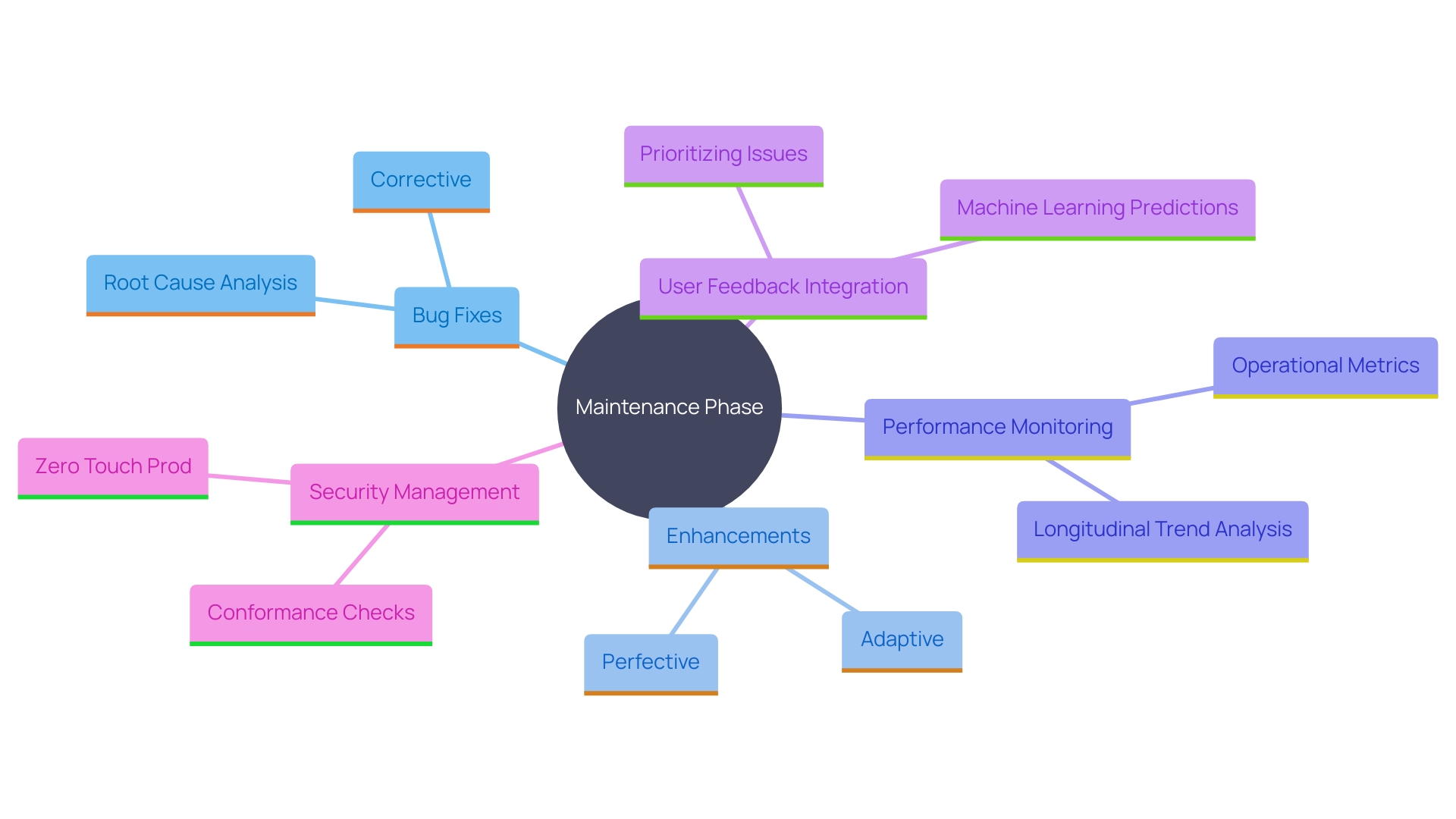
Common SDLC Models
Comprehending the different models of the Software Development Life Cycle (SDLC) is essential for choosing the most appropriate method for any specific task. Each model, whether it’s Agile, Waterfall, or a hybrid, offers unique methodologies that cater to different requirements. Agile, for instance, is known for its iterative approach, promoting flexibility and continuous improvement. Scrum, a subset of Agile, emphasizes providing small, incremental changes through sprints, which can be particularly effective in dynamic environments.
On the other hand, the Waterfall model follows a linear and sequential approach, which is advantageous for endeavors with well-defined requirements and minimal expected changes. This model emphasizes thorough documentation and clear milestones, making it easier to track progress and ensure each phase is completed before moving on to the next.
Current trends in program creation emphasize the growing intricacy and varied characteristics of contemporary projects. Technologies like microservices architecture and practices such as DevOps have become integral in enhancing agility and efficiency. 'DevOps, for instance, emphasizes automated testing and monitoring, which aids in identifying and resolving issues promptly, thus enhancing both the speed and quality of application delivery.'.
Statistics show that the SDLC typically involves five to seven phases, including planning, requirements gathering, system design, development, testing, deployment, and maintenance. Evaluating existing software to identify deficiencies is a critical initial step, as it provides insights into necessary improvements and helps in planning the new software requirements.
Moreover, a well-structured SDLC model can significantly affect the success of the endeavor. Clear objectives and effective management are essential factors, ensuring that projects stay on track and achieve their goals. By understanding and implementing the right SDLC model, teams can enhance their productivity, streamline processes, and ultimately deliver high-quality technological solutions.
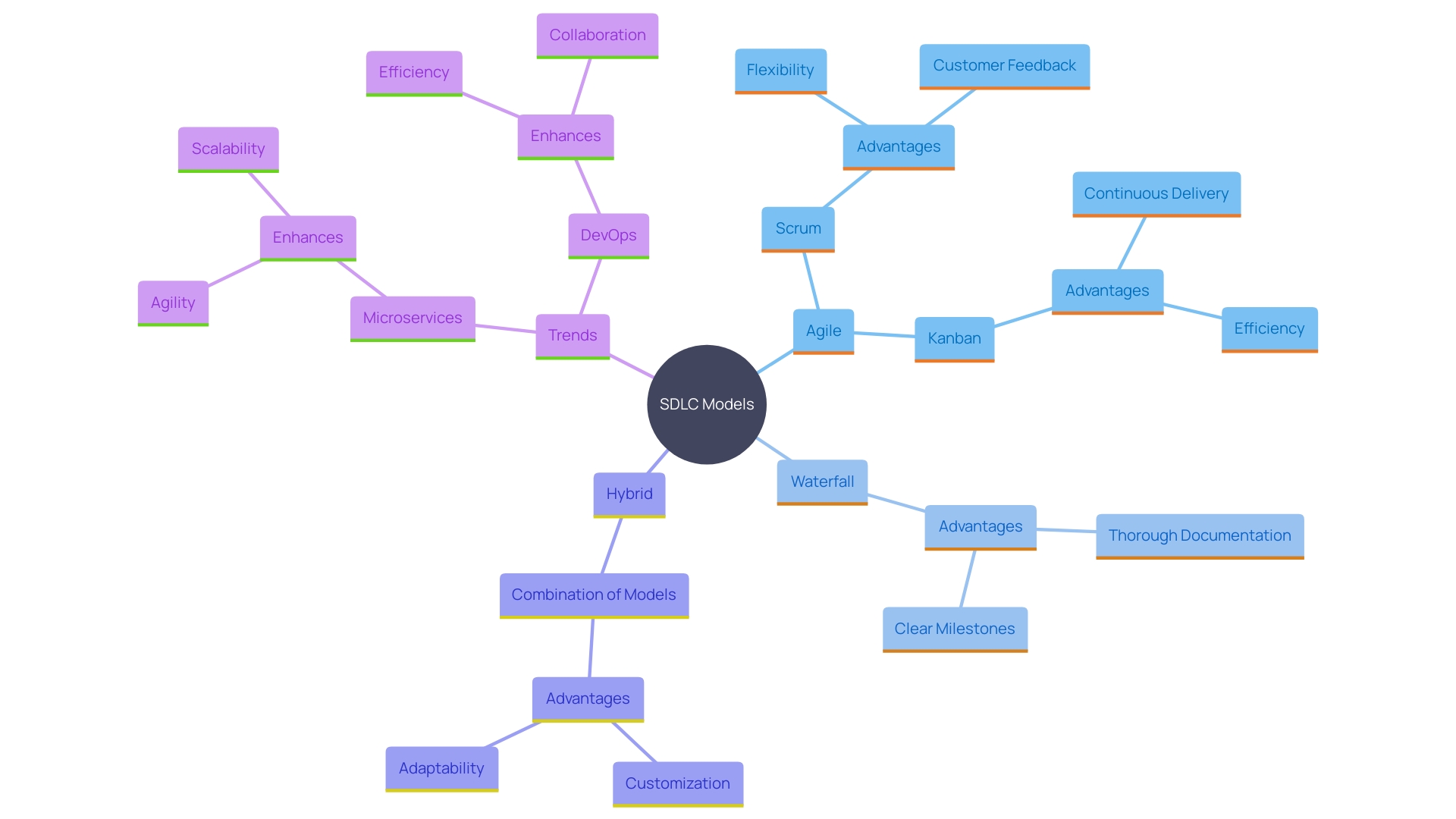
Waterfall Model
The Waterfall model is a structured and sequential method for software creation, where each stage must be finished before the subsequent one starts. This linear progression includes distinct stages such as requirements gathering, design, creation, testing, and deployment. The methodology's strength lies in its clear planning and well-defined roadmap, making it easier to estimate timelines and allocate resources efficiently.
However, the rigidity of the Waterfall model can pose challenges, especially when changes are needed after a phase has been completed. According to Dave Farley, author of 'Continuous Delivery,' Waterfall development assumes that each stage produces perfect outputs for the next, but in reality, errors are inevitable. This creates barriers to feedback, making it difficult to correct mistakes once they are identified.
Despite its limitations, the Waterfall model remains pertinent, particularly for endeavors with well-understood requirements and minimal changes. Its organized nature was crucial in the completion of significant engineering endeavors like the Hoover Dam, which was finished ahead of schedule despite the challenges of the Great Depression. This example underscores the model's capability to manage large-scale, complex projects effectively.
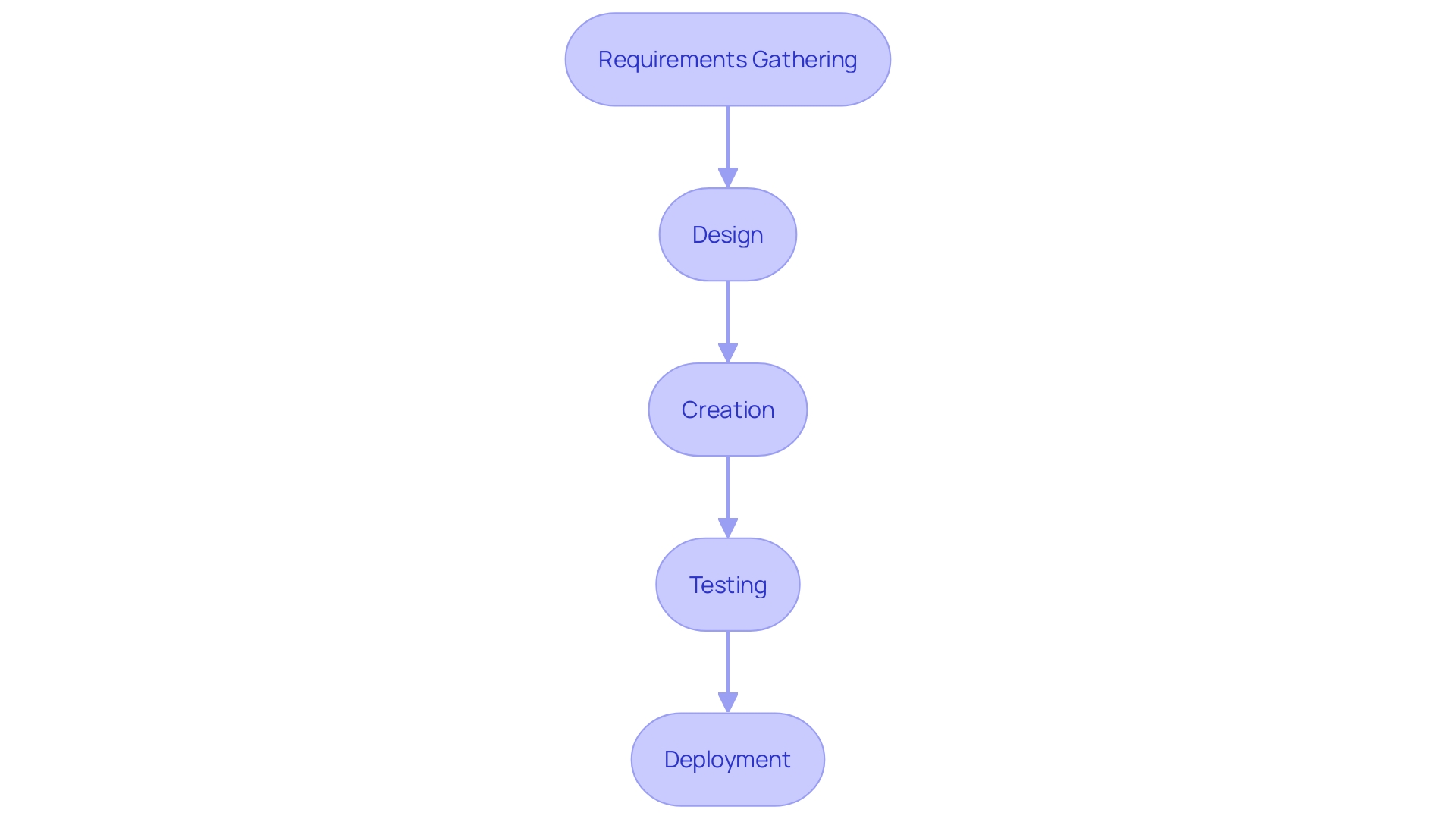
Agile Model
The Agile model highlights iterative progress, allowing teams to adjust quickly to alterations and provide regular increments of code. This approach is supported by comprehensive data from large implementations, such as those in the U.S. government, where stakeholders have transparent access to performance metrics through Agile Project Management Tools. Agile's iterative cycles and responsiveness are further demonstrated by the CACI’s ASF delivery execution model, which utilizes frameworks like Safe® and Scrum to optimize efficiency. Agile's principles of adaptability and teamwork have expanded beyond technology creation to sectors like federal government, highlighting its wide relevance. Based on a poll of 788 technology employees, 69% of IT and programming teams utilize Agile, indicating its extensive acceptance. Despite some challenges, such as aligning cross-functional teams and handling changes, Agile continues to evolve, driven by the need for adaptability and customer-centric approaches. Ivan's insights underscore the significance of a growth mindset and ongoing education in Agile settings, stressing that Agile is not merely a methodology but a transformative strategy for attaining excellence in technology creation.
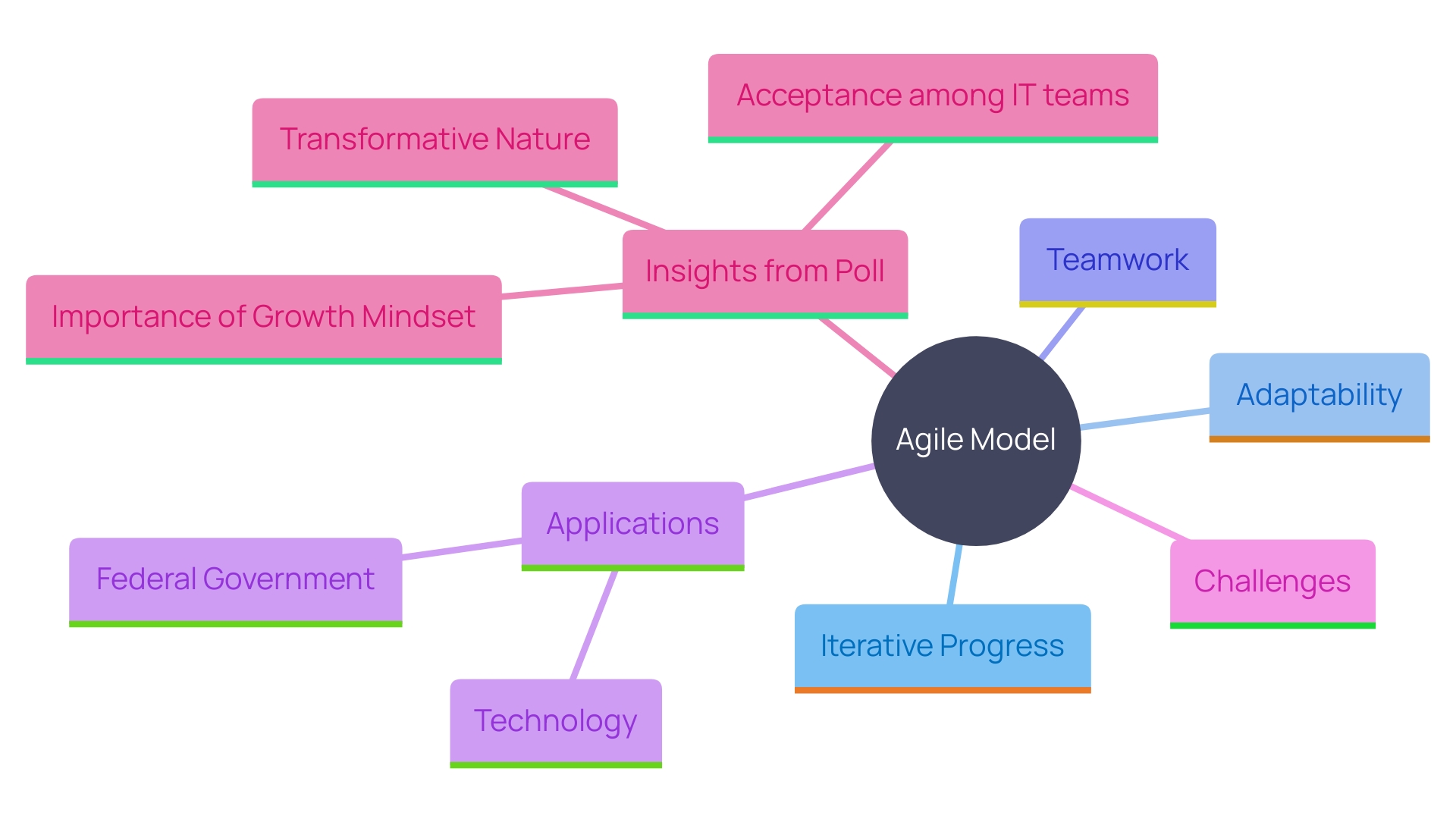
Iterative Model
'The Iterative model in application creation emphasizes ongoing improvement through repeated cycles.'. Each iteration builds on the previous version, incorporating feedback and making improvements. This approach is particularly beneficial in complex tasks where continuous feedback and iterative enhancements are essential. For instance, AI-powered coding assistants have shown to significantly boost productivity. In a study, teams using these tools completed tasks 30% faster than those using traditional methods. This model's adaptability and focus on incremental progress make it a powerful strategy for achieving higher efficiency and better software quality. By continuously refining each version, the Iterative model ensures that the final product is robust and meets user needs effectively.
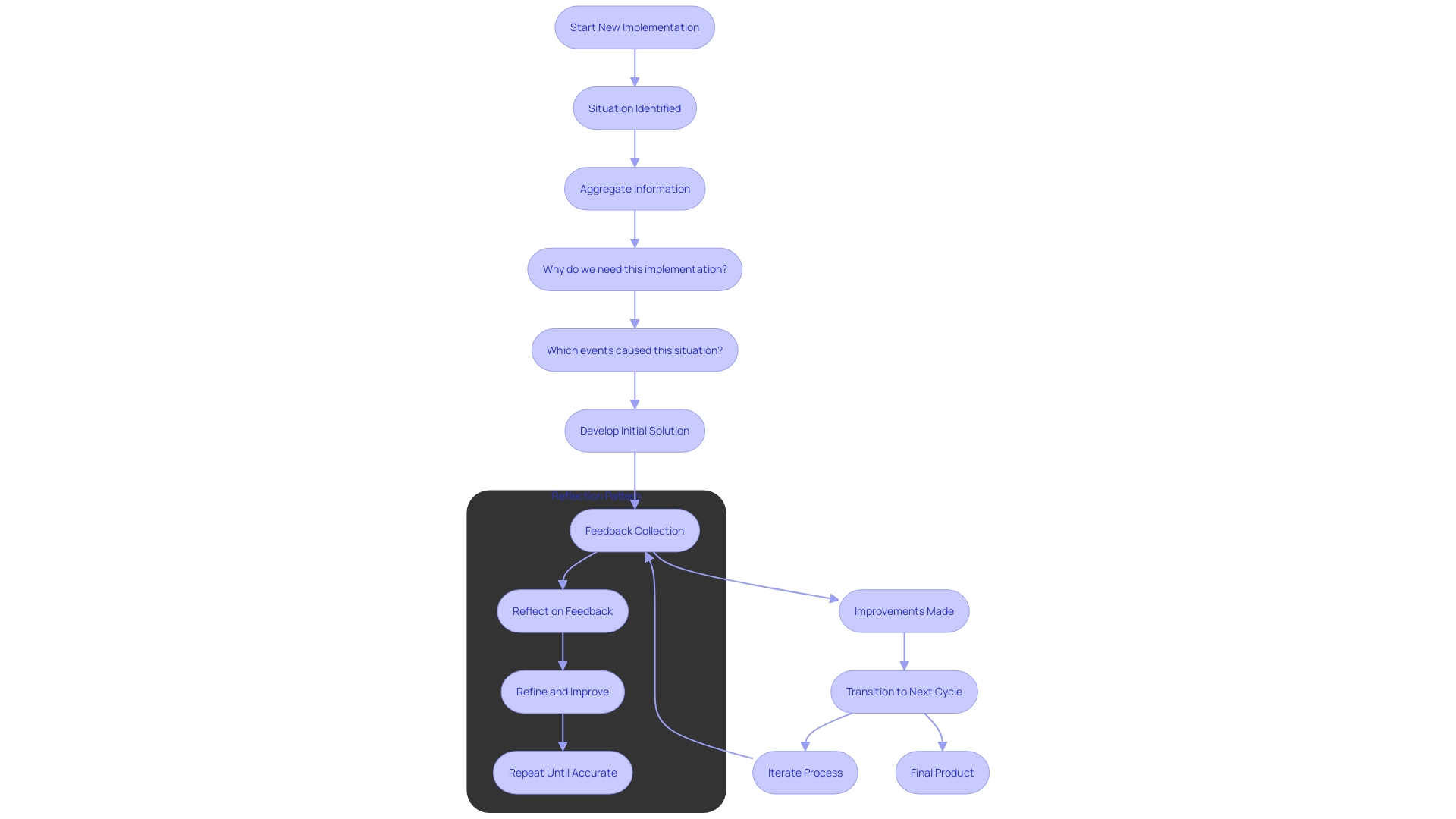
Spiral Model
The Spiral model, a strong blend of iterative development and systematic risk evaluation, is especially well-suited for managing large and complex endeavors. By repeatedly cycling through phases of planning, risk analysis, engineering, and evaluation, it ensures that potential issues are identified and mitigated early. This approach draws parallels to significant engineering feats like the Hoover Dam, which was completed ahead of schedule despite the Great Depression and unexpected geological challenges. Standing at 726 feet high and 1,244 feet long, the dam epitomizes how meticulous planning and iterative reassessment can lead to successful outcomes in the face of complexity. Similarly, the Spiral model empowers teams to navigate uncertainties by continuously refining their process, much like the strategic adjustments made during the construction of the Hoover Dam.
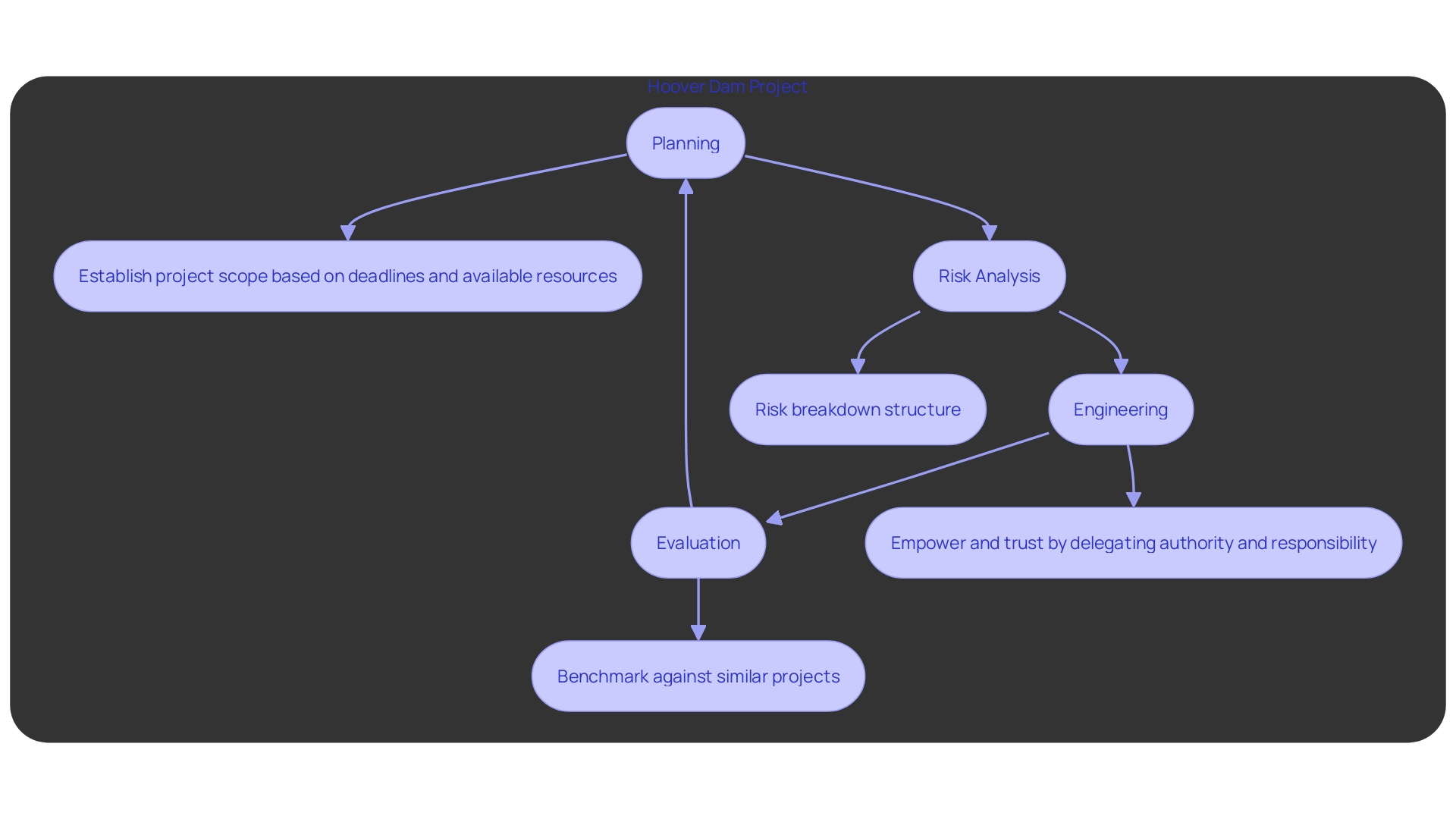
Benefits of SDLC
Executing the Software Development Life Cycle (SDLC) provides several benefits including better project management, enhanced communication among team members, and higher quality delivery. By adhering to a structured process, teams can better manage risks and ensure timely delivery. 'Contemporary application development has evolved to become more complex and multifaceted, driven by technological advancements and changing market demands.'. Effective SDLC planning involves strategic phases such as requirements gathering, system architecture design, coding, quality assurance, deployment, and maintenance. This structured approach not only addresses deficiencies in current applications but also provides a roadmap for developing robust, scalable, and efficient solutions. 'Utilizing modern practices like automated testing and monitoring, as well as microservices architecture, further enhances the agility and efficiency of the creation process, ensuring high standards of software quality.'.
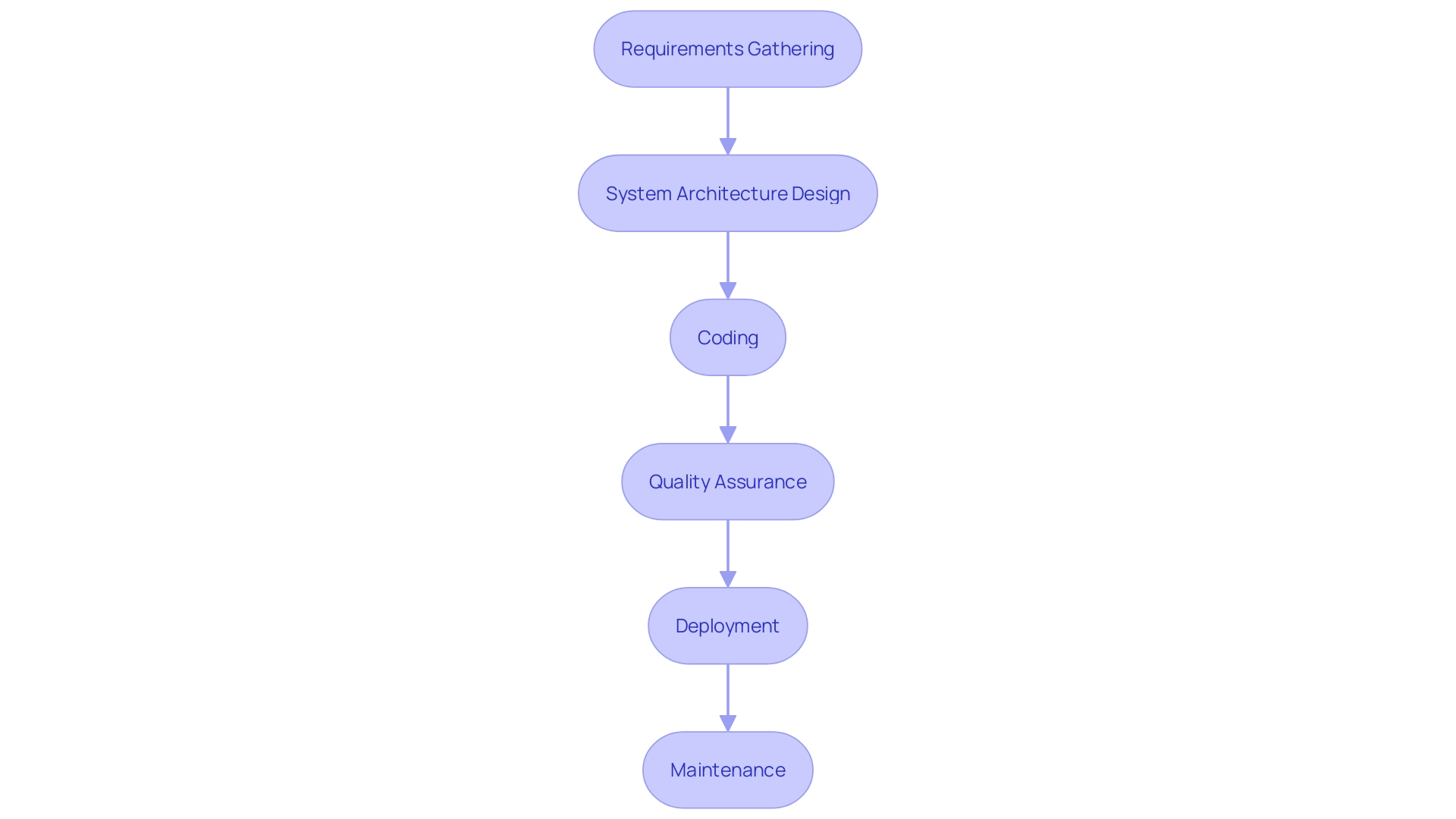
Challenges and Limitations of SDLC
While the Software Development Life Cycle (SDLC) offers numerous advantages, it also presents several challenges that need careful consideration. For example, the Waterfall model, recognized for its clear planning and structured approach, can be quite rigid, making it less adaptable to changes once the work is underway. This rigidity can lead to increased costs and delays, particularly in industries where flexibility is crucial.
On the other hand, Agile methods emphasize adaptability and ongoing collaboration, which can sometimes be hindered by traditional hierarchical structures and communication methods. Agile's emphasis on swift iterations and ongoing integration necessitates a significant degree of coordination and transparent communication, making it crucial to engage stakeholders throughout the creation process.
The construction of the Hoover Dam provides valuable insights into managing such complexities. 'Despite the challenges of the Great Depression, the endeavor was completed ahead of schedule due to meticulous planning and reducing dependencies among teams.'. Similarly, in modern software development, organizing work into smaller, manageable segments and fostering a culture of shared goals can help overcome these challenges.
Additionally, the tech industry faces evolving obstacles like developer burnout and the rise of AI, which impact Agile methodology. Addressing these issues requires a shift towards more collaborative and adaptive approaches, ensuring sustainable progress and effective project management.
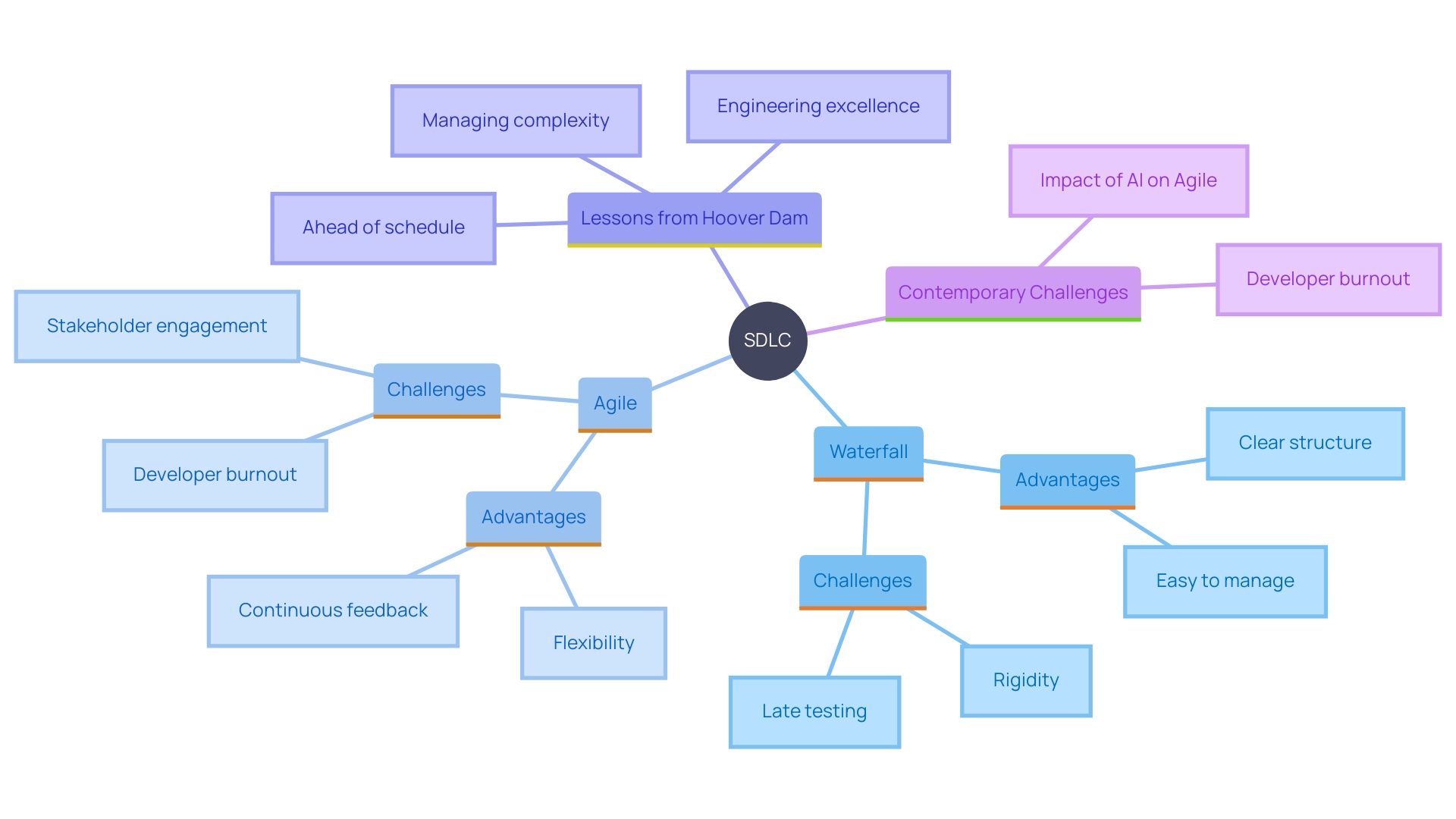
Conclusion
Implementing a structured Software Development Life Cycle (SDLC) significantly enhances the efficiency and quality of software projects. By breaking down the development process into clear phases—planning, requirements analysis, design, implementation, testing, deployment, and maintenance—teams can manage complexity and align their efforts with business objectives. This systematic approach not only identifies potential risks early but also fosters better communication and collaboration among stakeholders, ultimately leading to a product that meets user needs.
The selection of an appropriate SDLC model—be it Agile, Waterfall, Iterative, or Spiral—further amplifies these benefits. Each model caters to different project requirements, allowing teams to adapt their strategies based on specific circumstances. Agile, for instance, promotes flexibility and iterative development, while the Waterfall model offers a more linear approach suited for projects with well-defined requirements.
Understanding these models enables organizations to streamline processes and enhance productivity.
Despite its advantages, implementing SDLC is not without challenges. Rigidity in some models can hinder adaptability, and the complexity of modern software demands a balanced approach that encourages both structure and flexibility. By embracing contemporary practices such as automated testing and continuous integration, organizations can navigate these challenges effectively.
In summary, leveraging the SDLC framework not only ensures high-quality software delivery but also equips teams to respond dynamically to the ever-evolving landscape of technology and market demands. This commitment to a structured yet flexible approach is essential for achieving sustainable success in software development.
Frequently Asked Questions
What is the Software Development Life Cycle (SDLC)?
The SDLC is a structured process that outlines the stages involved in developing software applications. It includes phases such as planning, requirements gathering, design, development, testing, implementation, and maintenance.
Why is the SDLC important?
The SDLC is crucial as it helps ensure the delivery of high-quality applications that meet user expectations while managing costs and timelines. It facilitates better communication among stakeholders and allows teams to identify and mitigate potential risks early in the process.
What are the phases of the SDLC?
The key phases of the SDLC include: Planning, Requirements Analysis, Design, Development, Testing, Implementation, and Maintenance.
How does the SDLC facilitate quality assurance?
The SDLC integrates quality assurance at every stage, ensuring that potential issues are addressed early. This approach leads to more reliable end products and increases the overall quality of the software.
What role does collaboration play in the SDLC?
Collaboration among team members and stakeholders is enhanced through well-defined roles and clear documentation. This open communication streamlines the development process and ensures that the final product aligns with user needs and business objectives.
What are some common SDLC models?
Common SDLC models include: Waterfall, Agile, Spiral, and Iterative.
What challenges can arise during the SDLC?
Challenges include rigidity in the Waterfall model, which can lead to increased costs and delays if changes are needed after a phase is completed. Agile methodologies may face obstacles related to traditional organizational structures, requiring effective communication and collaboration to succeed.
How does the maintenance phase contribute to software longevity?
The maintenance phase involves bug fixes, performance monitoring, enhancements, and integrating user feedback. It is vital for keeping the software functional and relevant in a rapidly changing technological landscape.
What tools can help in the SDLC process?
Tools such as configuration management systems (e.g., Ansible), project management software, and testing tools (e.g., AI-driven testing solutions) can enhance the efficiency of the SDLC by streamlining processes and improving communication.
How can organizations adapt the SDLC to meet evolving project needs?
Organizations can adapt the SDLC by cultivating a culture of accountability, utilizing flexible methodologies like Agile, and implementing modern practices such as automated testing and monitoring to enhance agility and responsiveness to change.




